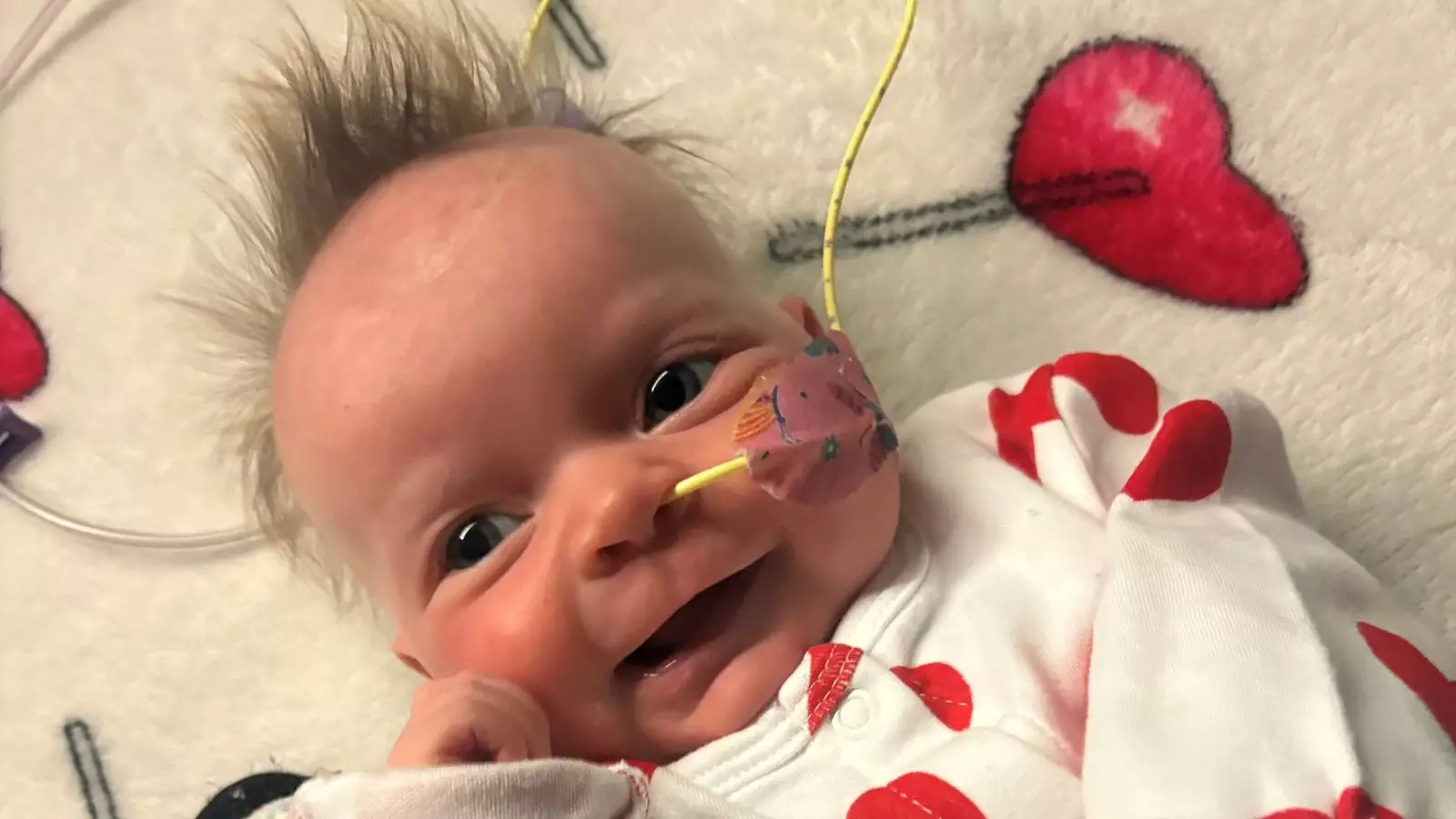In an era where medical advancements have revolutionized the treatment of myriad health conditions, families still face devastating situations that leave them searching for answers. One such case involves a baby girl named Dolcie-Mae Edwards-Raymond, who is battling hemophagocytic lymphohistiocystosis (HLH), a rare and life-threatening blood disorder. Hailing from Newport in South Wales, the three-month-old Dolcie-Mae has become the focal point of her family’s heart-wrenching journey. Her mother, Courtney-Jade Edwards, is fervently campaigning to raise awareness about the importance of stem cell donation, urging others to register and potentially save her daughter’s life.
Hemophagocytic lymphohistiocytosis may not be a widely recognized term outside the medical community, yet its implications can be severe. This immune deficiency disorder occurs when the body’s immune response goes awry, causing certain white blood cells to attack rather than protect the body. The condition can manifest quickly and dramatically, such as in the case of Dolcie-Mae, who initially presented symptoms that mimicked a viral infection but subsequently required urgent medical attention. The complexity and rarity of HLH pose challenges for doctors, who must act swiftly to diagnose and treat it effectively to prevent life-threatening complications.
For Dolcie-Mae’s family, the revelation of her diagnosis was nothing short of a crisis. The emotional toll of learning that their baby’s immune system was attacking her own body has been overwhelming. Such circumstances not only test the resilience of affected families but also highlight the often unseen struggle behind medical emergencies. Dolcie-Mae was airlifted to the Royal Victoria Infirmary in Newcastle, where she is receiving specialized care—an experience that no parent should have to endure.
In light of Dolcie-Mae’s diagnosis, her family is now directing their efforts toward the Anthony Nolan stem cell register in a bid to find a matching donor. Courtney-Jade’s appeal reflects the emotional journey of a parent faced with a child’s grave illness: “Help give patients like my baby girl a second chance at life,” she states. Her heartfelt message serves as an urgent call to action for those aged 16-30 to join the register and consider registering as potential lifesavers.
The stark reality is that a stem cell transplant can be a crucial lifeline for individuals suffering from HLH and other blood disorders. However, finding a suitable match is often a daunting task, highlighting the desperate need for continued awareness and participation in stem cell donation programs. The Anthony Nolan organization not only helps facilitate these life-saving donations but also provides support to families navigating the challenging landscape of blood-related illnesses.
Community and Compassion: The Importance of Awareness
The plight of Dolcie-Mae and her family is just one instance of a larger conversation about the critical need for community engagement and compassion in health crises. The fabric of society is woven with stories of struggle and perseverance. Each individual has the potential to contribute positively to someone else’s life through knowledge sharing and actions that amplify hope.
Charlotte Cunliffe, the director of register development at Anthony Nolan, has stressed the importance of community support during trying times such as these. Her organization embodies a bridge between suffering families and the compassionate donors needed to facilitate life-saving treatments. While the emotional weight of these stories can be heavy, they serve to remind us of the power of collective action and the necessity of spreading awareness about blood disorders and the impact of stem cell donation.
As stories like that of Dolcie-Mae Edwards-Raymond unfold, it becomes increasingly evident that each of us has a role to play in the narrative of hope and healing. By joining the stem cell register, individuals have the unique opportunity to potentially save lives and provide solace to families facing immense trials. Awareness and action go hand in hand; through understanding and participation, we can help create a future where fewer families are left in the darkness of uncertainty and despair. The journey may seem daunting, but together, we can foster a culture of compassion that ultimately leads to lives saved and memories cherished.


Leave a Reply